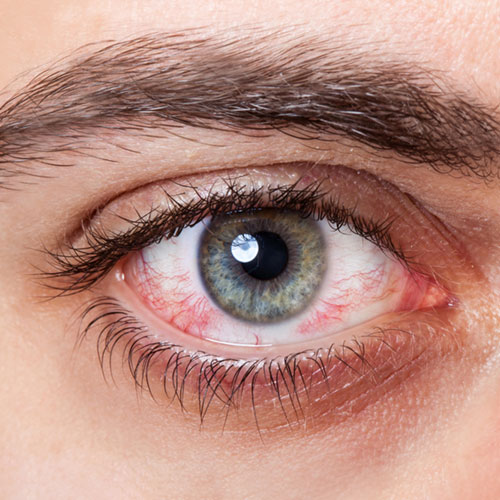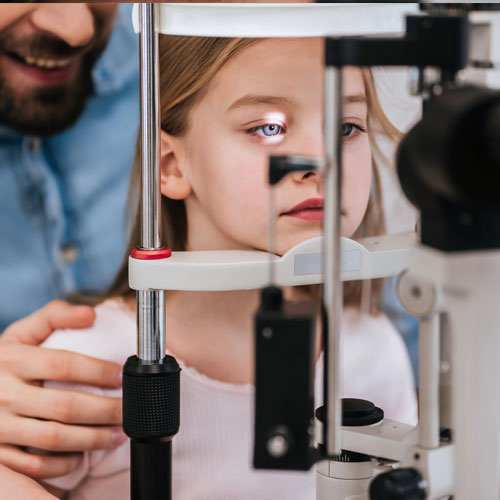An eye exam by an optometrist should be the first step for all your eye care needs. The optometrist provides primary eye health care including diagnosis and treatment of bacterial and viral infections, allergies and inflammations. The optometrist can also diagnosis and treat eyelid swellings, rashes, and bumps. The optometrist also monitors and screens for diabetic retinopathy, macular degeneration, and glaucoma and will refer to ophthalmology when indicated.
Eye Health

Ocular Disease

Children’s Eye Health
- Children’s eye problems are often overlooked because parents commonly have difficulty recognizing a vision or eye health problem. Children often fail to identify their problem because they are not aware of normal vision limits. Early diagnosis of high prescriptions, asymmetrical prescriptions, or high astigmatism can prevent future lazy eyes. It is important to have your child’s eyes examined at 6 months, once more between age 2-5, and every year thereafter. The optometrist may decide to see your child more frequently in some cases to monitor and prevent the development of a lazy eye.
- As your child grows and visual demands increase, new problems can arise. The most common conditions are myopia, hyperopia, astigmatism, and accommodative disorders (trouble focusing at near). The optometrist will prescribe unique glasses for each case and monitor your child closely to ensure that the child has optimal vision for their learning environment, as well as for sports and social activities.
- Children will also be checked for proper 3D vision, colour vision, eye muscle motility, and eye health. Eye exams are covered by OHIP up to 19 years old.

Flashes/Floaters/Visual Disturbances/Migraines
- Seeing flashes, floaters, and visual disturbances can be alarming. Find peace of mind by getting a proper diagnosis from an optometrist. The optometrist will examine if the problem warrants urgent referral to a retinal specialist for physical problems like retinal holes, tears, or detachments.
- In some cases, certain visual disturbances and migraines can be improved with special glasses and/or coatings. The optometrist will recommend the right lens treatments to optimize your vision and reduce symptoms.

Dry Eyes
Dry eyes are becoming more common as we stare at screens all day and increase our exposure to varying environmental conditions and irritants. There is an overwhelming number of products marketed for temporary relief of “dry eyes” which can contribute to worsening of symptoms in some cases. There are multiple types of dry eyes, each with its unique solution, and the optometrist will tailor a specific plan to treat your dry eyes. Left untreated, dry eyes can cause scarring and impaired vision. Having routine eye exams will ensure that the optometrist can notice signs of dry eyes even before you have symptoms which will allow for early treatment and maintenance of a healthy ocular surface.

Computer Eye Strain
As our world becomes more technological, our eyes are met with new and increasing demands. Digital eye strain can be minimized by workplace ergonomics, proper lighting, filters, and appropriate glasses and lens treatments. If you work in an environment with multiple screens or if your work involves looking at fine print, ask about special workplace lenses that fit your individual needs. You may also need a blue light blocking coating, which works by preventing harmful light rays from entering the sensitive cells in the macula. Some vitamins are also proven to protect these cells from these rays. Find out how we help you get the most comfortable and safe viewing environment for all your various screens.




